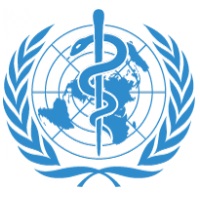The World Health Organization (WHO) is the directing and coordinating authority for health within the United Nations system. It is responsible for providing leadership on global health matters, shaping the health research agenda and much more.
| Who is WHO? | Regional Committees |
| World Health Assembly | IAPO working with WHO |
| Executive Board | How to work with WHO |
Who is WHO?
The World Health Organization (WHO) is the directing and coordinating authority for health within the United Nations system. It is responsible for providing leadership on global health matters, shaping the health research agenda, setting norms and standards, articulating evidence-based policy options, providing technical support to countries and monitoring and assessing health trends. WHO’s membership is made up of 194 countries that meet every year in May at the World Health Assembly (WHA), the decision-making body of WHO.
World Health Assembly
The World Health Assembly (WHA) is the decision-making body of WHO. It is attended by delegations from all WHO Member States and focuses on a specific health agenda prepared by the Executive Board. The main functions of the World Health Assembly are to determine the policies of the Organization, appoint the Director-General, supervise financial policies, and review and approve the proposed programme budget.
Executive Board
The WHA's work is supported by the 34 Members of the Executive Board who are elected by the Health Assembly and meet twice a year, in January and May. Together, the Executive Board and WHA define global health issues and create policies which impact on regional decision-making and national health systems around the world, and the agenda and papers are available to view here.
Regional Committees
Each of the six WHO world regions has a Regional Committee, which addresses the specific public health needs of that area. Regional Committees create regional health policies and programmes, approve budgets, and supervise the activities of the relevant Regional Office. The Committees meet at least once a year, and cover: Africa, South East Asia, Europe, the Americas, Eastern Mediterranean, and Western Pacific.
Read our factsheet on the Regional Committees for more.
IAPO working with WHO
IAPO has had official relations status with WHO since 2007. In order to be admitted into official relations with WHO, non-governmental organizations need to have a formal work plan with a department of WHO, and our official relations status was granted in recognition of our work with WHO Patients for Patients Safety (PFPS). This status is reviewed every three years and will be reviewed again in 2016.
Our official relations status means that IAPO is part of a formal process of engagement with WHO, and is able to meet with WHO technical staff, ministerial delegations, respond to consultations and participate in working groups and steering committees.
Our representatives can attend the WHO Executive Board, World Health Assembly (WHA) and Regional Committees and make interventions on agenda items of interest to IAPO and our members. We also work with other areas of WHO including the departments responsible for non-communicable diseases (NCDs), and health systems and research.
How to work with WHO
In 2011-2012, IAPO ran a Mentor Programme exclusively for IAPO members that provided an insight on WHO’s World Health Assembly and the work of WHO at the national, regional and international levels. To share this information with all patients’ organizations, IAPO has published this Report and Guidelines to help patients’ organizations understand:
- The purpose and structure of WHO
- How WHO can benefit patients’ organizations
- How patients’ organizations can work with WHO

